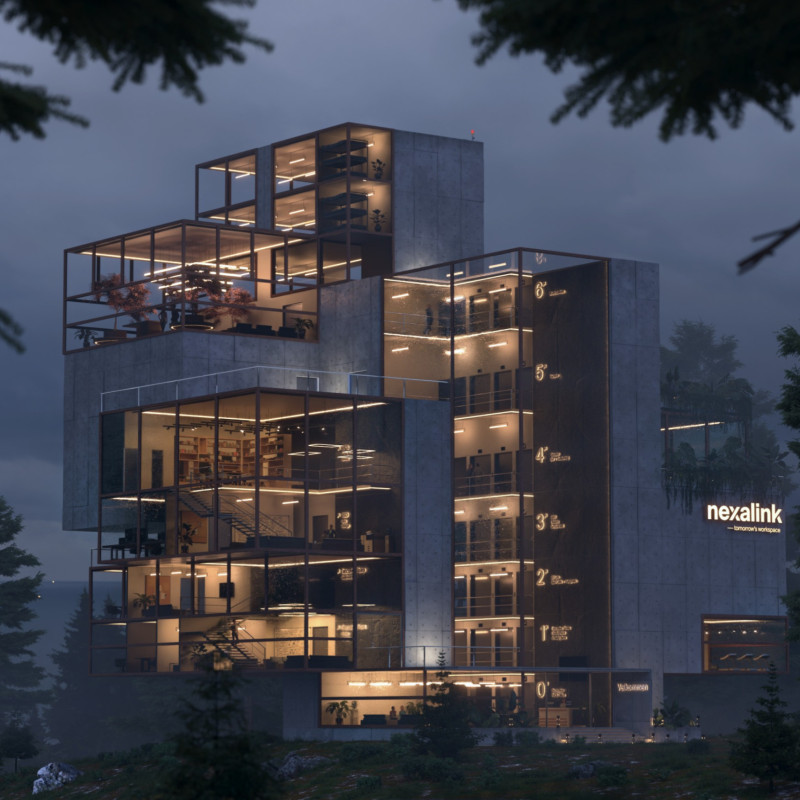5 key facts about this project
The design employs a central hub surrounded by modular components, referred to as “molecules.” These molecules cater to different functional needs, including workspaces, research facilities, and social areas. The architectural approach focuses on adaptability, allowing for easy reconfiguration to meet changing demands, which is crucial in modern work environments.
Modularity and Flexibility of Space
One of the key features of the Nexalink project is its modular structure. This design allows components to be assembled or reconfigured based on the users' evolving needs. Each module functions independently while contributing to the overall coherence of the workspace. The layout of the interior spaces prioritizes open areas that foster interaction, collaboration, and dynamic workflows. This flexibility is critical for accommodating various professions and work styles, making the space versatile.
The use of multiple interconnected “atoms” also enables the creation of diverse settings, from isolated work zones to collaborative hubs. The design includes spaces dedicated to research and development, libraries, and lounge areas, promoting innovation and creativity. This thoughtful organization facilitates seamless movement and interaction among occupants, enhancing productivity and community engagement.
Sustainable Architectural Solutions
Sustainability is a fundamental aspect of the Nexalink project. The design incorporates a range of environmentally responsible materials and practices. Heavy concrete is utilized for its durability while reinforcing thermal mass, and extensive glazing optimizes natural light and views of the surrounding landscape. The architectural solutions include advanced insulation techniques to reduce energy consumption and maintain a comfortable indoor climate.
Energy performance assessments illustrate that the building minimizes carbon emissions through passive heating and robust insulation strategies. Solar studies show that orientation is considered to maximize natural light while keeping energy efficiency in mind. By focusing on sustainable architectural solutions, the Nexalink project not only addresses current environmental concerns but also promotes responsible design principles.
The Nexalink project represents a forward-thinking approach to architecture that integrates modularity and sustainability. Its design fosters a collaborative workspace while remaining adaptable to future changes in function. For more detailed insights, including architectural plans and sections, explore the project presentation to discover the specific design elements and concepts that contribute to this innovative workspace.


























